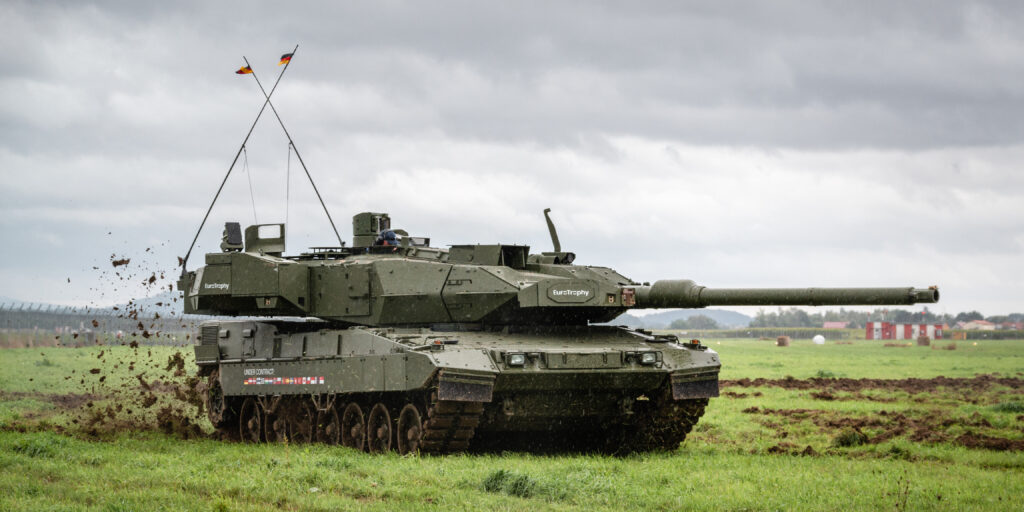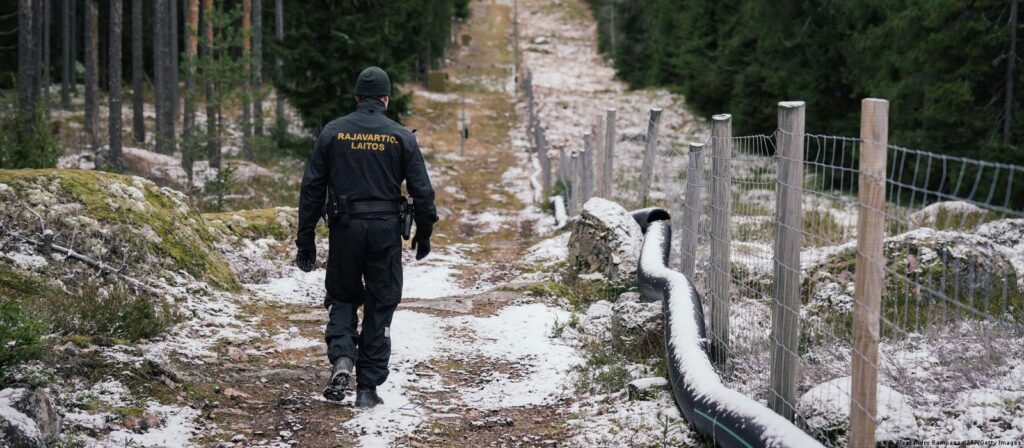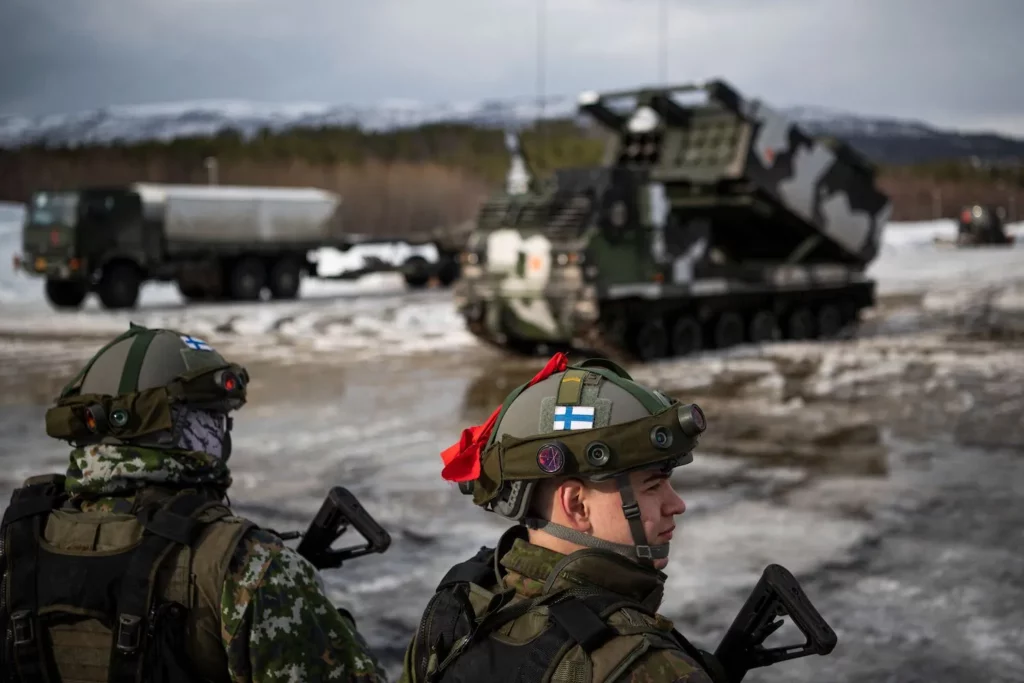Amid tensions over the expansion of the Atlantic Alliance to the east and the crisis between Russia and Ukraine, DW explains the origins and goals of the organization.
(DW) Also known as the Atlantic Alliance, the North Atlantic Treaty Organization (NATO) was founded in 1949 primarily to act as an obstacle to the threat of Soviet expansion into Europe after World War II.
In addition, the United States saw it as a tool to prevent the resurgence of nationalist tendencies in Europe and to promote political integration on the continent.
Its origins, however, date back to 1947, when the United Kingdom and France signed the Treaty of Dunkirk, forming an alliance to counter the eventuality of an attack by Germany after the war.
The 12 original founding members of the political and military alliance are: United States, United Kingdom, Belgium, Canada, Denmark, France, Iceland, Italy, Luxembourg, the Netherlands, Norway and Portugal.
Collective Security
In essence, the organization acts as a collective security alliance with the goal of providing mutual defense by military and political means if one of its members is threatened by an external state.
This framework is set out in Article 5 of the charter, the collective defense clause:
“The parties agree that an armed attack against one or more of them in Europe or North America will be considered an attack against all of them, and accordingly agree that if such an armed attack occurs, each of them, in the exercise of the right of individual or collective self-defense recognized by Article 51 of the Charter of the United Nations, will assist the attacked party or parties by taking immediately, individually and together with the other parties, such measures as it deems necessary, including the use of armed force, to restore and maintain the security of the North Atlantic region.”
Article 5 was evoked once, by the United States, after the attacks of September 11, 2001.

A bulwark against the Soviet Union
The Soviet Union responded to NATO by creating its own military alliance with seven other Eastern European communist states in 1955 through the Warsaw Pact.
But the fall of the Berlin Wall and the subsequent collapse of the Soviet Union in 1991 paved the way for a new post-Cold War security order in Europe.
Freed from their Soviet shackles, several former Warsaw Pact countries became members of NATO. Visegrad Group members Hungary, Poland, and the Czech Republic joined in 1999. Five years later, in 2004, NATO accepted the membership of the so-called Vilnius Group consisting of Bulgaria, Estonia, Latvia, Lithuania, Romania, Slovakia, and Slovenia. Albania and Croatia joined in 2009.
The most recent accessions were Montenegro in 2017 and North Macedonia in 2020, bringing the total number of member countries to 30. Currently, three countries are classified as “aspirant members”: Bosnia and Herzegovina, Georgia, and Ukraine.
In May 2022, prompted by Russia’s invasion of Ukraine, the governments of Finland and Sweden supported both countries’ membership in NATO, signaling a change in their decades-long policies of military non-alignment. NATO Secretary General Jens Stoltenberg said it would be possible to allow Finland and Sweden to join the alliance quickly.
Open-door policy
Against the backdrop of the standoff between Russia and Ukraine on their shared border, Kiev’s ambition to join the alliance has regained momentum. At the NATO summit in Bucharest in 2008, NATO formally welcomed the membership aspirations of Ukraine and Georgia, but failed to grant membership action plans. For Russia, the prospect of its former Soviet republic Ukraine joining NATO is unthinkable.
NATO’s so-called open-door policy, as outlined in Article 10 of the treaty, allows membership for any European country that can enhance and contribute “to the security of the North Atlantic region.”
“Countries aspiring to NATO membership are expected to meet certain political, economic, and military objectives to ensure that they become contributors to the security of the alliance as well as its beneficiaries,” the NATO website announces.
April 2023 – NATO’s border with Russia doubles with Finland’s entry

The North Atlantic Treaty Organization (NATO) border with Russia doubled in length on Tuesday (04/04), to 2,600 kilometers, with Finland joining the military alliance. The 31st and newest member has a 1,340-kilometer border with Russia in northern Europe.
From the Barents Sea in the north to the Gulf of Finland in the south, this virtually unprotected border is mostly forested and sparsely inhabited.
The announcement of Finland’s membership in NATO was made on Monday by NATO Secretary General Jens Stoltenberg and will be made official at a summit meeting of the alliance’s foreign ministers in Brussels on Tuesday.
Finland’s membership in NATO is a major setback for Russian President Vladimir Putin, whose priorities include preventing the expansion of the Western military alliance. “The Kremlin wanted less NATO, but it will get just the opposite,” Stoltenberg stressed.
State-of-the-art Army
The details of Finland’s integration into the Atlantic Alliance have not yet been settled, not least because a new government is being formed in the country. It remains to be seen, for example, whether other member countries’ troops will be stationed on Finnish territory or whether the government will accept nuclear bombs being stationed in the country.
NATO considers that the Finnish military does not need help to protect its borders. Military service is compulsory in Finland, which has about 24,000 active military and 900,000 reserve personnel. If necessary, the army, navy, and air force would immediately have 280,000 combat-ready men and women.
This is a relatively large number for a population of 5.5 million people. “Finland did not reduce its investments in the Armed Forces with the end of the Cold War,” the NATO Secretary General noted.
Stoltenberg pointed out that the new member strengthens the alliance. The Finnish Air Force, for example, will contribute 60 modern fighter planes to the protection of NATO territory. The Finnish military is on the same level as NATO’s and can be immediately integrated, the alliance says.

Russia reacts
Even as a neutral country over decades, Finland has maintained a high military contingent, based on the experience of the 1939/40 Winter War, says defense expert Jacob Westberg. At the time, Finland lost to the Soviet Union 10 percent of its territory.
In Moscow, Deputy Foreign Minister Alexander Grushko announced that in response to Finland’s entry into NATO, Russia will increase its military presence in the northwest of the country.
“It is a new aggravation of the situation. The expansion of NATO is an attack on our security and national interests,” the Russian presidency said in turn. “This forces us to adopt countermeasures.”
Experts assess that the imminent change of government in Finland, after the defeat of the Social Democrats, should not have any effect on the country’s entry with NATO, since this issue is consensual among political parties.
“Finland’s policy toward Russia will increasingly be based on deterrence to the detriment of dialogue,” comments security expert Minna Alander in an interview with Redaktionsnetzwerk Deutschland, the joint editorial office of several German regional newspapers.
And Sweden?
Finland’s entry was the fastest in the 74 years of NATO’s existence. The application was made jointly with Sweden in May 2022, but met with resistance from the Turkish government. At the end of March this year, Turkey finally unlocked the membership process.
Stoltenberg said he hopes Sweden will also join the military alliance soon and called on Turkish President Recep Tayyip Erdogan to review his veto, arguing that Sweden has met all the demands made of it. Turkey demands the extradition of Kurdish dissidents, classified by the government in Ankara as terrorists.
For Westberg, Sweden’s entry would be both a military and political gain for NATO. “It would make it more difficult for Russia to operate in the Baltic Sea. Sweden has five very modern submarines, which would complement Poland and Germany’s fleet,” he says.
Despite the blockade, Sweden still hopes to join NATO before the organization’s next summit in Vilnius in July. Stoltenberg said he has no doubt that Sweden will be the 32nd member state, but there are still issues to be resolved with Ankara.
*** Translated by the DEFCONPress FYI team ***
